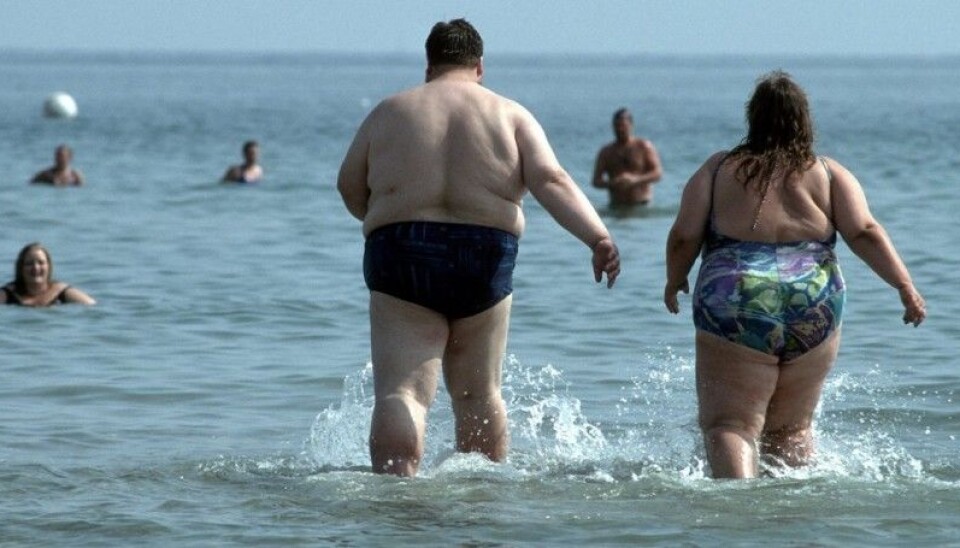
Is there an x-factor behind the obesity epidemic?
Weight = calories in and calories out, right? It's not that simple.
The fact is, the average weight of populations worldwide has been on the rise since the 1980s, and the weight gain is hitting across all social strata.
A lot of research suggests that food has the greatest influence on weight. But the problem is that the evidence points to the opposite.
And despite indications that physical activity has declined since the 1980s, little suggests that this is the main reason behind the weight gain of the last 30 years.
Many experts conclude nonetheless that more food and less exercise are making us fatter. But what if there’s more?

What if something else is causing us to put on weight, regardless of lifestyle?
NTNU Professor Bård Eirik Kulseng thinks the question is worth asking, and believes there may be “an x-factor in obesity that we don’t yet understand.”
A calorie is not a calorie
Weight is a simple matter of thermodynamics. We've heard it so often.
Energy in minus energy out equals a surplus or a deficit. So if you put on weight, it means you’re consuming too many calories or getting too little exercise. Or both.
Energy can’t disappear or arise from nothing, so on one level this holds true.
However, evidence is showing that a calorie is not always just a calorie in the gut.
After dieting, for example, most people find that their metabolic rate has slowed down. So when they return to a normal caloric intake, they end up gaining weight again- even if they eat the same amount as a thin individual.
In other words, a calorie for one person is not the same as a calorie for another. Or before and after dieting.
The body seems to have a great ability to regulate how much energy it burns and how much it holds on to.
And that brings up an interesting question: Can other impacts than diets change this regulatory ability?
Has some aspect of our environment, for a large part of the population, resulted in our bodies extracting more energy from the food we eat today than it did 30 years ago?
Professor Jørn V. Sagen at Haukeland University Hospital in Bergen believes it's certainly a possibility.
Strange research results give hints
The authors of a 2010 research article examined developments in weight among a whole host of lab animals, pets and feral rats that lived with or near people.
It turned out that all the groups had become heavier in the same time frame as humans had. This applied especially to laboratory animals, even though their diet and environment have remained very consistent for several decades.
In another thought-provoking article, Canadian researchers told about their research, which delved into the results of studies on diet and physical activity from different years. They identified groups of people from 1988 and 2006 who had similar diets and levels of physical activity. Then they compared the body mass index (BMI) of the two groups.
It turned out that the group from 2006 had a significantly higher BMI than the corresponding group from 1988.
Are we different today?
Despite weaknesses in these studies, they still raise an interesting question,” says Kulseng from NTNU, and that is, are we the same people today?
“It would have been interesting if someone had done a study of the base metabolism of a group of people, which we could repeat today to see if it’s changed,” he says.
Because if human metabolism is lower today, we will gain weight even though we eat and exercise as much as before.
Whatever are possible variables that could have changed us this way?
At the moment, no one knows for sure. But several factors may be involved. Consider, for example, that as weight has gone up, smoking has decreased. Or the increased use in recent years of medications that can change one’s weight. Or maybe the shift to more carbohydrates in our diet could be affecting our metabolism.
And yet other factors could also be playing a role.
Toxins
Environmental toxins are substances that that tend to accumulate in living beings and not biodegrade easily. Heavy metals, PCBs and dioxins are examples.
“Several studies have shown that certain pollutants may cause obesity-related changes in cells and animals. Some human population studies point in the same direction,” says Anders Goksøyr, professor at the University of Bergen.
But contaminants are many and exist in different quantities and compositions, and research results are mixed.
It may be that the effect is more complicated. “Some studies suggest that the mother's diet is important. That children of mothers who have ingested pollutants have a higher BMI,” Goksøyr says.
Blood samples taken in connection with the large Nord-Trøndelag Health Study (HUNT) surveys in Norway date back to 1985, and Kulseng believes one could measure the level of pollutants in these samples to examine the relationship between environmental toxins and obesity in Norway’s population.
The researcher says he would love to study the issue further, but that it lacks funding.
Sagen from Haukeland thinks Norwegian economic interests may be one reason that few Norwegian researchers are looking for such a connection. Oily fish, like salmon, can be one of the sources of toxins in our diet.
Goksøyr confirms that “there should be greater focus on this, but it’s uncomfortable because of the fish farming industry in Norway. We are seen as opponents, because this concern contradicts studies showing that fish is healthy.”
Intestinal bacteria
Not only pollutants can affect our weight.
Several recent studies have found that the bacteria in our gut may be significant. Mice that received intestinal bacteria from a person with obesity became obese themselves. Mice that received bacteria from a thin donor became thin.
In 2015, it became known that a woman who had received intestinal bacteria from her obese daughter suddenly developed obesity herself.
The connection is interesting enough that American scientists now want to initiate a study in which individuals with obesity have gut flora transferred from thin donors.
We know little about how our gut flora have changed over the last decades. But given the increased use of antibiotics and dietary changes, major changes in the population are not out of the question.
Fat cells that burn energy
Research in the last few years has also revealed that fat cells in the body not only store energy, but some of them — the so-called brown fat cells — can also burn energy to create heat.
Scientists have long known that human babies and numerous animals have a lot of brown fat, which protects them from the cold. But recently it also became clear that adults may have substantial amounts of brown fat.
Experiments have shown that brown fat cells in laboratory animals played a role in regulating weight when the animals are fed too much. They simply burned the surplus as heat.
Can brown fat cells play a similar role in our bodies?
Already in 2009, Patrick Seale and Mitchell Lazar speculated that perhaps individual differences in the activity of brown fat cells explain why some people can seemingly eat anything, while others easily gain weight, in a comment in the journal Diabetes.
Other studies have shown that people with obesity seem to have little brown fat activity.
Could something in our environment make brown fat cells less effective today?
Cold increased metabolism
“A fun survey was conducted in 2014, where volunteers wore cold outfits for a couple of hours every weekday for four weeks,” said Professor Birger Svihus from the Norwegian University of Life Sciences (NMBU).
It turned out that the subjects gained more active brown fat and permanently elevated their metabolism. So “it’s certainly possible to alter the activity of these cells,” he says.
Sagen from Haukeland says it’s still unclear what significance brown fat has in humans and how changes in these cells may influence the development of obesity. But he is sure there will be more research on this in the future.
“This is also an interesting field when it comes to treating obesity and type 2 diabetes,” says the professor, who has studied how brown fat cells can be activated to treat these disorders.
Sagen thinks the interest in intestinal bacteria and toxins will also grow in the coming years.
Epigenetics
Our DNA is not altered in one generation. But research in the past decade has made it clear that environmental influences contribute to regulating the activity in our genes — through epigenetics.
These environmental factors can change how different genes are used. And these changes can in some cases be transferred to the next generation.
In other words, something that affected our parents or grandparents might have altered the regulation of our genes, and perhaps also of our metabolism.
But, according to Sagen, “we are really only in the starting gate when it comes to understanding the role of epigenetics.”
Multiple factors
Could an x-factor behind the obesity epidemic hold the key?
Currently, the answer is simply: we don’t know.
But several researchers believe it’s likely. And they don’t believe the world's obesity epidemic can be blamed on large parts of the planet's population suddenly beginning to eat too much and exercise too little.
The hunt for any x-factor in the obesity epidemic isn’t easy. So much has changed in our society in recent decades. And to complicate matters, researchers aren’t even sure that the important changes have occurred within the last decades.
“Obesity is probably due to several mechanisms that converge simultaneously. Telling them apart is one of the things that will be important in future research,” says Sagen.
—————————————————-
Read this article in Norwegian at forskning.no



































